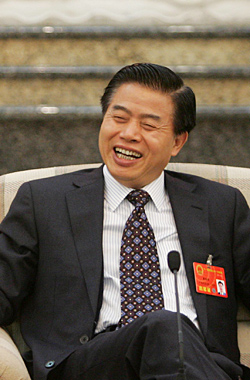|
 |
|
(CFP) |
Guangdong Province—China's manufacturing center—is striving to upgrade its traditional industrial sector and improve its innovation capacity. In an interview with Beijing Review, Huang Huahua, Governor of Guangdong Province, talked about the measures that will address the challenges to industrial structure optimization and innovation expansion, as well as the impact of the yuan's appreciation on the province's economy.
Beijing Review: How has Guangdong implemented the Outline of the Plan for the Reform and Development of the Pearl River Delta (2008-20)?
Huang Huahua: We've really been focusing all our efforts on carrying out this outline and, so far, we've seen noticeable achievements since it was approved by the State Council in 2008.
Over the past two years, we've incorporated a number of counter-crisis measures into relevant efforts pertaining to the plan. We've invested heavily in key projects listed in the outline, boosted consumption and promoted stable growth of foreign trade to maintain stable and relatively fast economic growth.
With the outline as a guide, we promoted economic structure adjustment and optimization, and encouraged indigenous innovation and the establishment of a modern industrial system in Guangdong. We've also made every attempt to change the stereotype that Guangdong is only a manufacturing powerhouse—we hope the province will soon be known for its capacity in creativity and innovation.
In addition, we promoted economic integration in the Pearl River Delta, focusing on urban-rural planning, industrial distribution and environmental protection in the three economic rims with centers in Guangzhou, Shenzhen and Zhuhai. We've also pushed forward administrative reform, deepened economic reform and improved social management systems.
We also continued to open the market and vowed closer economic ties with Hong Kong and Macao, while cooperating with the two special administration regions in implementing the outline.
| 